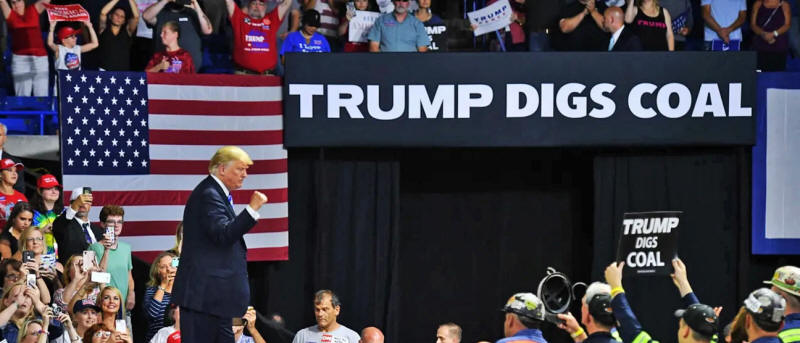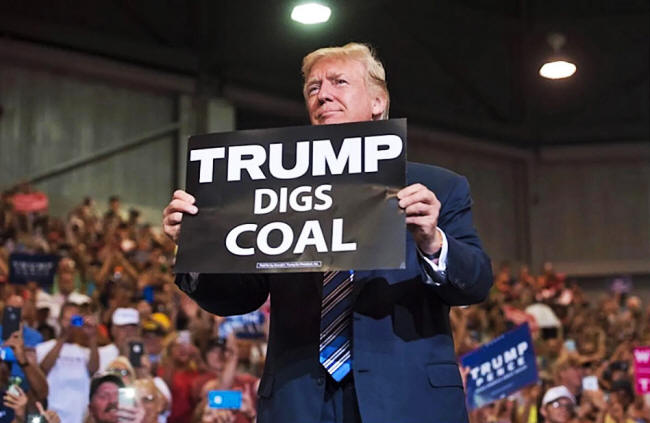|
is taking the necessary steps to revive the coal industry,
but
there's a long way to go...
President Trump took two major steps to end the 14-year-old Democrat war against the coal industry and cheap electricity.
Although Greens have promised to sue, they are unlikely to succeed as the moves have been pretty much pre-approved by the Supreme Court.
First, the EPA proposed rolling back all greenhouse-gas emission standards for coal plants.
The Obama EPA first issued climate emissions standards for coal plants in August 2015. These rules didn't last long as they were [struck down] by the Supreme Court in February 2016.
Although President Trump proceeded to replace the Clean Power Plan with the much less expensive and more practical Affordable Clean Energy rule in June 2019, that effort was rejected by the Court of Appeals for the DC Circuit in January 2021.
But that turned out to be a Pyrrhic victory for climate activists.
In June 2022, the Supreme Court invalidated the Clean Power Plan in West Virginia vs. EPA based on a first-time used constitutional theory called the major questions doctrine.
Under that doctrine,
The Clean Power Plan had no such authorization.
But the never-admit-defeat Biden EPA went back to the drawing board and issued a new rule that can essentially be thought of as a Clean Power Plan 2.0.
It is this rule that the Trump EPA is now rolling back.
When the Greens sue the Trump EPA, the agency will be able to point to West Virginia vs. EPA and say that neither the Biden EPA nor the Trump EPA has been expressly authorized by Congress to regulate emissions from coal plants.
This should be a winning argument...
The second rule to be rolled back is something called the Mercury Air Toxics Standard (MATS).
As far as the war on coal is concerned, this is a much more important EPA rule, as it was the one the Obama EPA used to wreck 50 percent of the US coal industry.
Issued in 2012, the MATS rule was aimed at reducing mercury emissions from coal plants, something that sounded scarier than it really was.
When the EPA did the benefit-cost analysis for the MATS rule, it could only come up with hypothetical benefits worth $6 million, while the actual compliance costs were estimated to be on the order of $10 billion.
In the 2015 SCOTUS (Supreme Court of the United States) ruling that rejected EPA's benefit-cost analysis as unreasonable, Justice Antonin Scalia wrote,
Similarly to the regulatory ping-pong of the Clean Power Plan, the first Trump EPA took action to defang MATS.
The Biden EPA responded by defying SCOTUS and making the rule more stringent.
The rule's economics have only gotten worse for its advocates, and a challenge to the Trump EPA's new action is unlikely to succeed.
While the good news is that these Trump EPA actions should finally put an end to the war on coal, the bad news is that severe damage to the industry and the cheap electricity it provided was done long ago.
Obama EPA chief Gina McCarthy mocked the tardiness of SCOTUS, responding to the Court's decision as follows:
Even the West Virginia vs. EPA decision came seven years after the Clean Power Plan was first issued.
Democrats wielded the government to illegally wreck the coal industry and to pointlessly raise electricity prices.
President Trump is taking the necessary steps to revive the coal industry, but there is a very long way to go...
|



